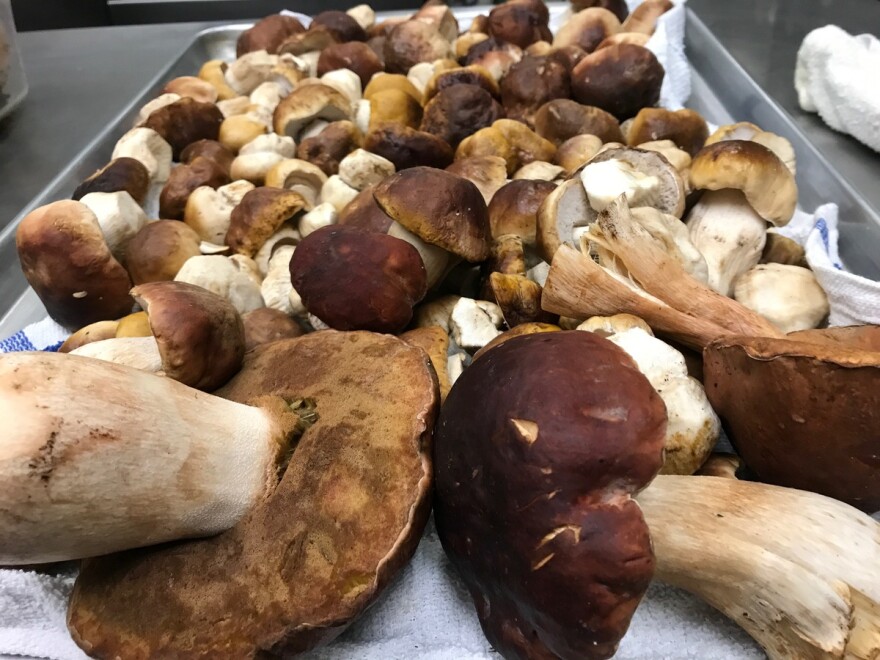It’s mushroom hunting season in Northern Arizona. People come from all over to forage edible fungi from the monsoon-soaked woods, and they’re cooking up some tasty dishes. KNAU’s Aaron Granillo has this audio postcard in the latest installment of our occasional series, Eats and Beats, stories about food and music.

Mike Dechter, Arizona Mushroom Society: We’re at the Flagstaff Arboretum, and we’re at the annual mushroom festival here. I always say this is the mushroom backwaters of the world because people think Arizona and they think deserts. But here, in northern Arizona, where we get these monsoon rains, which happen during the warm part of the year, those are prefect conditions for growing mushrooms. And they love the forest habitats. So, the lobster mushroom is a great starter mushroom. It has that bright orange color, it’s edible, not much taste, but great texture and great color. If you have the patience to clean them, then sky is the limit. You can collect as many as you want and cook with it all year long.

Chef Michael Difilippantonio, Chef at Criollo Latin Kitchen in Flagstaff: So, I’ve got mushroom fajitas, which have lobster mushrooms, Caesar amanitas, shitake mushrooms, portabellas, wild and domestic oysters, and then peppers and onions. Keeping wild mushrooms simple is the best way to do it because they’ve got their own great flavor in them. They’re like a sponge too, so whatever you flavor put into them they’ll soak up. My favorite is the king bolete mushroom or the porcini mushroom. The easiest thing to do is sauté them in butter and garlic and shallots and salt and pepper. So, we have a small window of mushroom growing here in northern Arizona, but when it happens, it’s happening. If you just go out and look for mushrooms, they’re out there. You just have to go look.

Brian Konefal, Chef and Owner of Coppa Cafe in Flagstaff: So, we’re at about 8,000 feet, and we’re in mixed aspen and ponderosa pine. So, we can find a lot of different varieties because there’s pines right next to aspens. Now, this time of year, there’s a lot of dropped pine needles. We’re going to look for little lifts in the pine needles, so small little mounds. You can see over there, those might be some. And, that’s where the mushrooms started to come up. Not everything is going to be above ground when you’re mushroom hunting. It gets so addicting, you know, and you’ve got to be careful because if you have a significant other that you like to hike with, the hikes totally change in the summer time, and you’re not listening. Or, you’re not even looking at the view because you’re just staring at the ground and looking for wild foods. It’s like a treasure hunt, you know, it’s an adult treasure hunt. I think mushrooms should be treated pretty simply. If you’re at home, I would say eggs, pasta, rice. Keep it real simple. Bread.

Alright, so we’re making a lobster mushroom and crayfish bisque. Some butter, some shallots, a head of garlic. We add up chopped lobster mushrooms and now, we’re just going to cook it nice and low and slow so everything’s tender and the butter itself will take on, like, a reddish hew. You know, our season is short, and it’s really rain dependent, so when it’s now, right now it’s abundant. It’s as flavorful and fresh as we ever get things. Our own flavor would be probably taming the wild. Because somethings are really tough to make it out here. They’re a little heartier. Like our sages, our wild sage is stronger. Our wild mint is stronger. So, you have to play around with how you use it. Taming the wild. The Wild West.






